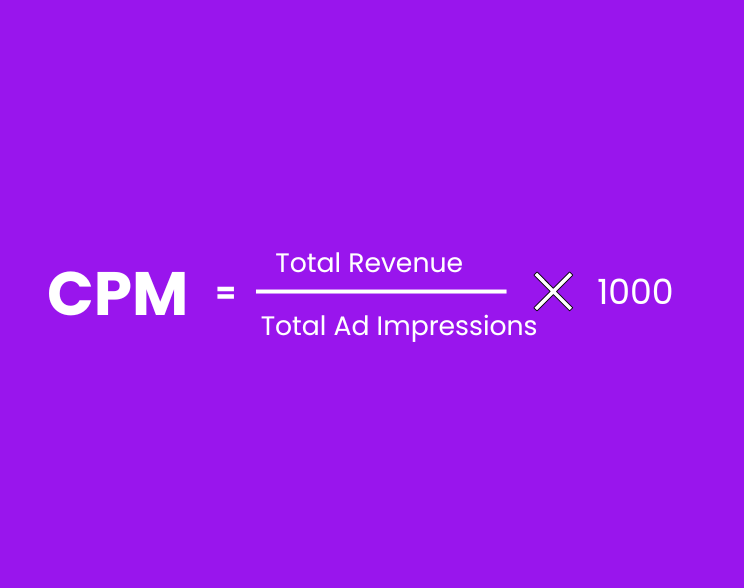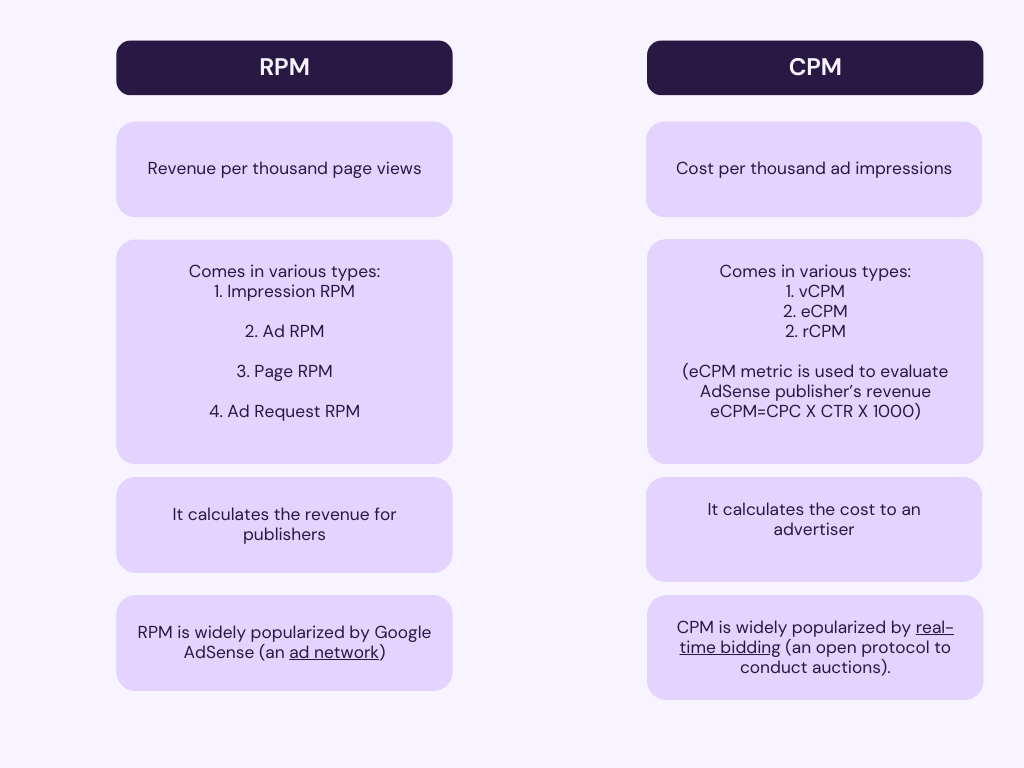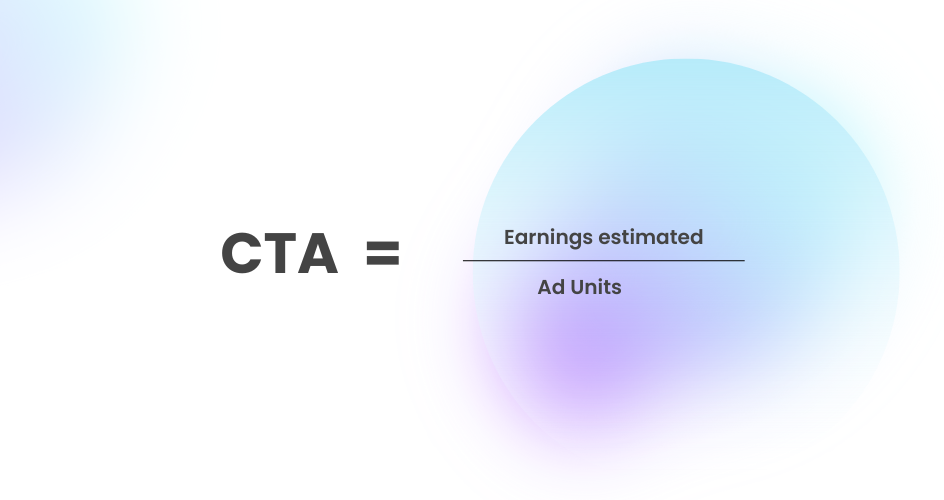In the digital ad industry, there are various revenue-calculating models in use. Nevertheless, the most used are RPM and CPM models. However, independent publishers often find themselves caught between a rock and a hard place when it comes to understanding and choosing between RPM (Revenue per Mille) and CPM (Cost per Mille).
Both metrics are crucial for maximizing your advertising revenue, but the difference in their usage and the potential confusion can lead to a game of cat and mouse.
In this article, we’ll delve deep into the realms of RPM and CPM, demystifying their nuances, their interconnectedness, and how you can use them to your advantage. So, buckle up, and let’s get started.
Table of Contents
What Is RPM?
RPM, or Revenue per Impressions (or Mille), refers to the estimated revenue generated from 1,000 page views. So, the RPM metric calculates the revenue earned for page views rather than 1000 ad impressions. Wondering how the two are different? Well, a single page view can contain multiple ad impressions, which collectively contribute to the revenue.
RPM, made popular by Google AdSense, is considered a publisher-side metric and tells you about your estimated earnings. However, the important point to ponder here is that your actual earnings after the ad is served can always be more or less than the estimated RPM.
RPM offers the publishers a comprehensive understanding of the ad inventory’s performance. By offering insights into revenue generation, RPM enables you to make data-driven decisions and fine-tune your ad placements and strategies for optimal results.
To calculate RPM, you divide the total revenue generated from the page on your website and divide it by the total number of page views, then multiply the result by 1,000. The outcome represents the estimated revenue generated for every 1,000-page view. Here’s RPM formula:
How to Calculate RPM?

Let’s further break it down-
Suppose a publisher generates revenue around $750 for 450,000 pageviews. In this case, the RPM would be calculated as follows:
RPM = (Total revenue/Total number of page views) x 1000
= ($750 / 450,000) x 1,000
= 0.00166667 x 1,000
= $1.67.
The publisher should expect to earn an estimated $1.67 for every 1,000-page view.
Why Is RPM Important for Publishers?
As a publisher, you can consider RPM important:
- To know which pages are generating more revenue for you.
- Which content format and ad format is helping you increase your overall yield.
- Which ad exchange or partner is getting you the best bucks from the market.
What Is CPM?
CPM, or Cost per Impression, is a popular advertising metric representing the advertising cost for every thousand ad impressions. For publishers like you, it is the revenue generated for every thousand ad impressions served on your website or platform.
Regardless of whether an ad is clicked or not, an advertiser pays for every 1000 ads displayed in an ad space on a website, known as an impression.
However, things are a bit complicated here. For instance, if you use Google AdSense, you’ll be presented with RPM earnings (estimated earnings per 1000 page views). It’s better to keep track of it and increase it. If you use any other CPM ad networks, you will naturally be paid based on impressions; hence, you are supposed to keep track of CPM.
How to Calculate CPM?
To calculate CPM, use the following formula:

For instance, let’s assume you generated $5,000 for a CPM-based campaign and received total of 2,500,000 (2.5 million) impressions.
To determine the advertiser’s CPM, you would use the formula:
CPM = (Total ad revenue / Number of impressions) x 1,000
= ($5,000 / 2,500,000) x 1,000
= $2
In this example, the advertiser would pay you, the publisher, $2 for every 1,000 ad impressions.
Related Read: Understanding CPM: The Key Metric for Publishers’ Revenue Generation.
Why Is CPM Important for Publishers?
CPM is an important metric for you as a publisher when you want to know:
- The value of your impressions.
- The value of your ad units and placement.
- Which ad network or ad exchange is paying you more for your inventories.
- Which ad format is helping you generate the extra bucks.
What Is the Difference Between CPM and RPM?
The confusion between RPM and CPM arises because RPM is typically higher than CPM. This is because RPM considers all ad units on a web page, while CPM only considers the number of impressions per ad unit.
For example, if a web page has six ad units but only three receive impressions, the CPM would be based on three, while the RPM would be based on all six. This difference in calculation can cause publishers to see a significant gap between their RPM and CPM. Other differences are:

Deriving CPM from RPM
Though both differ, you can derive CPM from RPM and vice versa. Let’s assume there are 5 ad units on a page, and $0.25 is the estimated earnings from 20 page views.
So, the RPM will be 0.25/20 X 1000= $12.5.
For every 1000 page views, the 5 ad units will return a revenue of $12.5.
Now let’s convert this RPM of $12.5 into CPM. Before we get into this, it is important to find the cost to advertisers, i.e., CTA. CTA can be found by the formula:

Here CTA will be: $0.25/5= $0.05
Thus, CPM = (CTA/page views) X 1000 = ($0.05/20) X 1000=$ 2.5.
Is CPM Better Than RPM
Whereas RPM depicts the revenue generated by the page, CPM gives a more clearer picture of the performance of each ad unit. With the help of CPM, publishers can analyze the worth of the ad unit and can make future decisions accordingly. The point to remember here is that the RPM will always be higher than the CPM.
What to Choose – RPM or CPM
As a publisher, it’s essential to understand the distinctions between RPM and CPM to make informed decisions about your advertising strategies and earnings. While RPM provides an estimated revenue for publishers and is widely used by Google AdSense, CPM is an advertiser-centric metric that represents the actual cost paid to publishers by advertisers.
Both metrics have benefits and drawbacks, but it’s important to focus on more than just RPM or CPM. Prioritizing user experience, ad viewability, and quality content should be at the core of your monetization strategy. Doing so will encourage advertisers to invest more in your inventory, leading to higher CPMs and, ultimately, higher earnings.
Remember that both RPM and CPM are based on estimates and can be influenced by various factors, such as user behavior, time spent on the web page, and overall user experience. Therefore, tracking both metrics separately and adjusting your strategy accordingly is crucial.
In conclusion, as a publisher, it’s not about choosing between RPM and CPM but finding the right balance between them. Ending on a lighter note –
Why did the publisher start using CPM instead of RPM?
Because they realized that sometimes, it’s better to “see PM” than to estimate!
FAQs
1. What is the main difference between RPM and CPM?
RPM is a publisher-centric metric that estimates revenue per thousand-page impressions, while CPM is an advertiser-centric metric that calculates the cost per thousand ad impressions.
2. Can I use both RPM and CPM to analyze my earnings as a publisher?
Yes, you can use RPM and CPM to understand your earnings, but tracking them separately and adjusting your strategy accordingly is important.
3. Should I prioritize increasing my RPM or CPM as a publisher?
Instead of solely focusing on RPM or CPM, prioritize user experience, ad viewability, and quality content to improve your overall monetization strategy and increase earnings.























